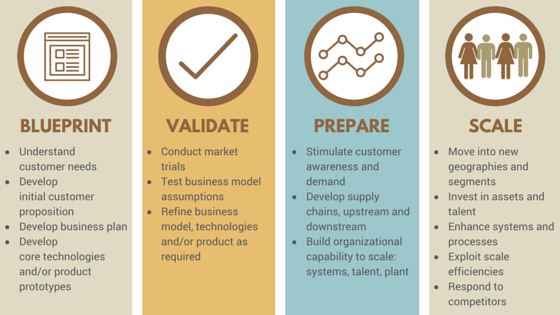By Nicole Etchart, Co-Founder and Co-CEO, NESsT
The growth of the social enterprise economy in the past two decades is due to its success in addressing entrenched social and economic problems. The persistent problems of unemployment, poverty, social exclusion, poor social services, and environmental degradation – even in fast-growing emerging market economies – call for new, innovative solutions. Neither pure market-based nor pure public sector approaches have effectively confronted these problems.
Przedsiębiorstwa społeczne oferują hybrydową odpowiedź na złożone problemy społeczne. Przedsiębiorstwa społeczne zajmują się społecznymi i ekonomicznymi barierami, z którymi borykają się społeczności zmarginalizowane lub znajdujące się w niekorzystnej sytuacji, i próbują radzić sobie z nimi, stosując podejście rynkowe. Są one często najlepiej przygotowane do reagowania na krytyczne problemy społeczne, ponieważ najczęściej powstają jako inicjatywy społeczności lokalnych, blisko problemów i z udziałem w ich rozwiązaniu. Często wprowadzają na rynek nowe produkty i usługi oraz budują popyt rynkowy poprzez podnoszenie świadomości na temat problemów, które rozwiązują.
However, in order to take advantage of this opportunity, and to truly leverage the potential of social enterprise, all stakeholders must take on some risks and make contributions. There is no “free ride” in the challenging road toward social enterprise development. This is particularly the case for early stage social enterprises. NESsT defines early-stage enterprises as enterprises that are 1-4 years into their development and show potential to be financially self-sustainable and scalable. The enterprise has sales, and may even be growing, but it is still not ready for pure market investment. Therefore it relies on patient capital (grants, soft loans, quasi equity) and ongoing and tailored capacity support to get to the next phase of growth.
Investing in the "Pioneer Gap"
The recent interest in social enterprise has tended to focus on the two extremes of the enterprise development spectrum. On one side of the spectrum, are multiple programs focusing on recognizing and awarding great social enterprise ideas. There are university programs, corporate and government competitions, social labs – in the North and increasingly growing in the South – that focus purely on the idea stage. The combination of low levels of investment and high levels of visibility, provide an attractive way for many to support the social enterprise sector. However, often these prized ideas never come to fruition, lacking the financing and strategic support needed to bring them to the next level.
On the other side of the spectrum, the incredible growth of the impact investing sector with promises of financial and social returns, has meant an over emphasis on investment-ready models that are ready to grow and scale. Focusing only on proven models has resulted in a much smaller number of investments than the industry had bargained for.[1] And although there is growing recognition among the sector that we need to help enterprises become investment ready, there is still a lack of patient capital – both investment and philanthropic – and longer term support to help make this happen. The plethora of accelerator programs that are starting to work with earlier stage enterprises has helped to address this gap. However, giving funding constraints, most only provide shorter term support, often times exiting enterprises before they have a chance to truly consolidate their models.
NESsT enters this spectrum in the middle or “pioneer gap” – between idea and investment readiness. We invest in these early stage enterprises for 5-7 years, providing them with ongoing strategic advice, patient capital, access to networks until these enterprises are ready to scale.
Source: From Blueprint to Scale: The Case for Philanthropy in Impact Investing (Monitor Group & Acumen Fund, 2012)
Why Do We Take this Approach?
Ponieważ uważamy, że to właśnie na tym etapie jest największy potencjał oddziaływania. To właśnie na tym wczesnym etapie możemy po raz pierwszy dotrzeć do osób najbardziej wrażliwych - ubogich, wykluczonych i narażonych na ryzyko wykluczenia, osób które często postrzegane są jako kandydaci do pomocy charytatywnej i stają się zależne od darczyńców lub są po prostu ignorowane. To właśnie tutaj dominuje empatia dla grup wrażliwych i to tutaj dopuszczalne jest ryzyko porażki. To właśnie na tym etapie możemy zapewnić, że "to, co społeczne" w przedsiębiorczości społecznej jest na równi z "przedsiębiorstwem".
It is also at this stage, where we can iterate and develop business models that are affordable for these communities and respond to their realities, while also generating sustainable cost-revenue structures for the enterprises. It’s during early stage validation, that we are attuned to the social barriers that need to be overcome by the business model. It’s here when we have the opportunity to figure out a way to incorporate access to technology, training, and other types of needed support as part of the business. It’s here when we experiment with a tailored package of patient capital, that slowly allows the enterprise to consolidate their team and systems that will ultimately lead to scale.
And if we focus on early stage, we will get better at it. We will be able to figure out the models that work and replicate them. We will be better positioned to leverage the right engagement, to provide the appropriate metrics, and to manage expectations (i.e. we shouldn’t expect scaling numbers at early stage). As the sector becomes more mainstream and sophisticated, it’s critical that we focus on this stage and that we find ways to work with accelerators, incubators, philanthropists and early stage impact investors to provide longer and more engaged philanthropic capital and mentoring support. Yes, it’s risky. Yes it’s costly. But if we ignore it, we face the even bigger risks of skewing our sector toward only certain models, or of allowing it to be co-opted by those who want to use it as a “feel good” investment alternative or perhaps, most tragic of all, of missing the unique opportunity we currently have to scale the social enterprise economy.
[1] As of 2013, roughly US$10.6 billion in capital was committed to impact investment funds, of which roughly $5 billion was actually invested. (State of Impact Investing in Latin America, Bain Report, 2014).


